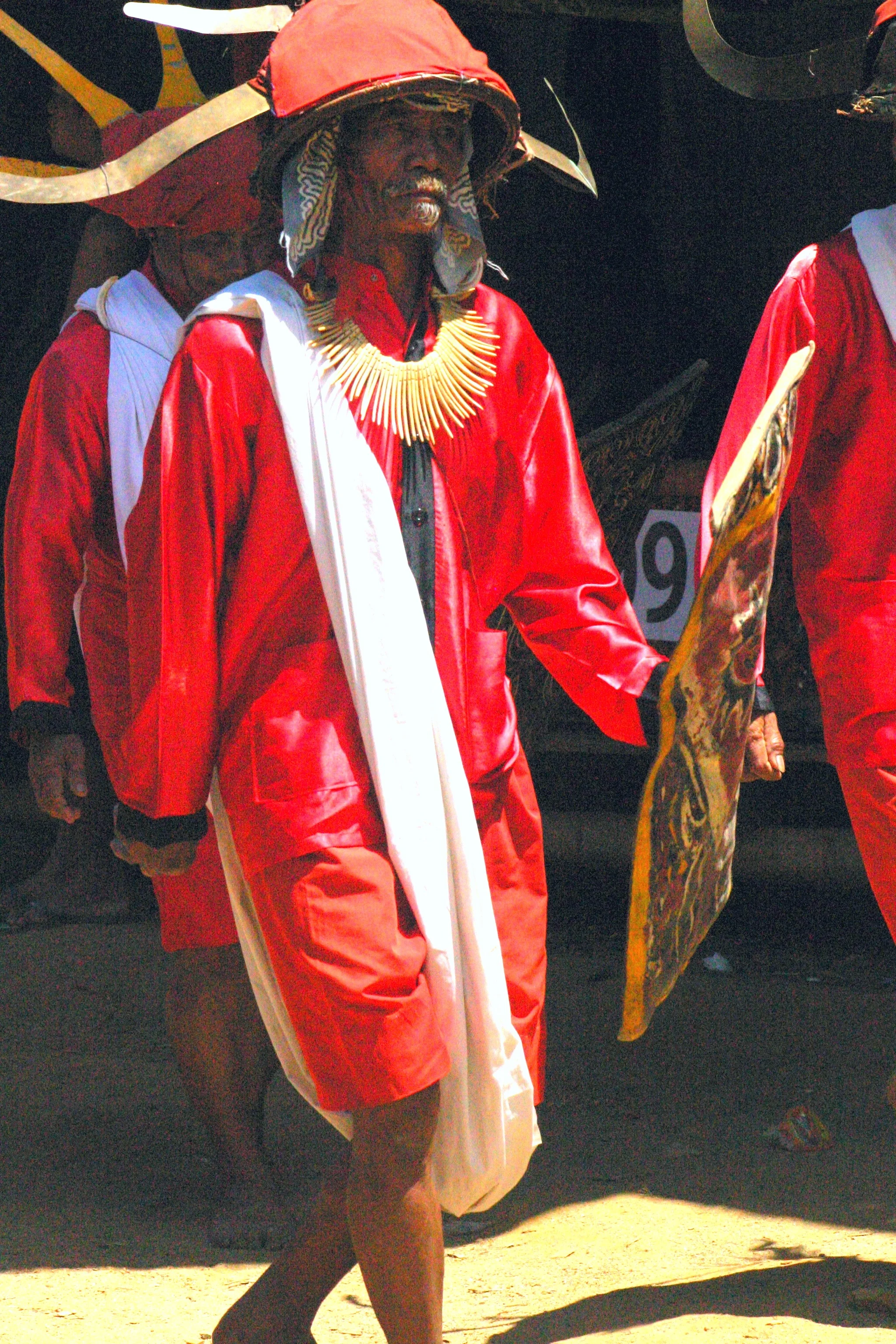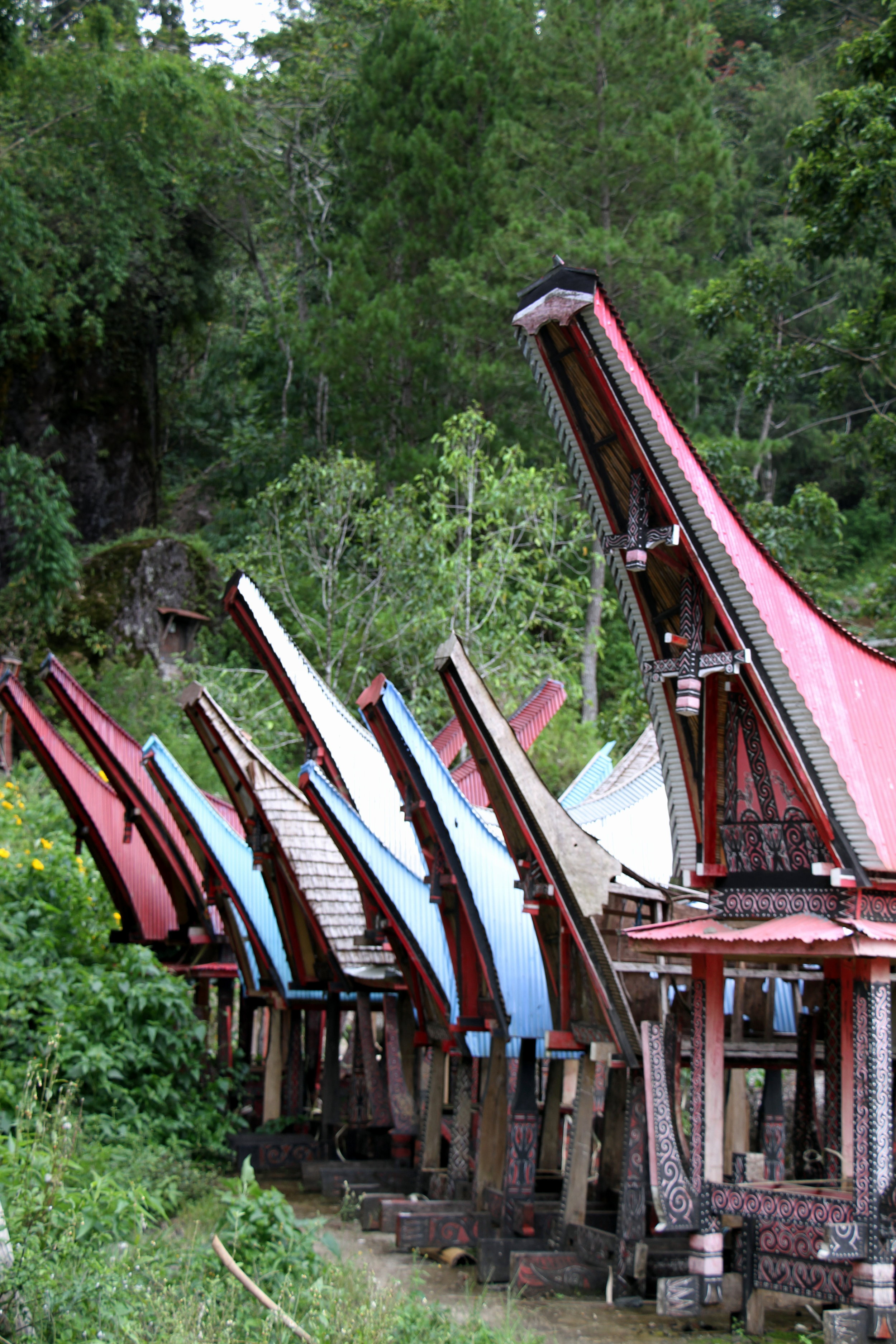Chasing Down The Star People. A Journey To Tana Toraja
Lying sprawled between Borneo and Papua New Guinea is the world’s 11 th largest island, the oddly shaped landmass of Sulawesi, home to the most ethnically divergent peoples found anywhere.
To some, the island resembles a giant spider that has fallen from its lair high in the ceiling and landed with its legs splayed awkwardly in all directions. Surrounded by the sapphire-blue waters of the Java, Flores, Banda, the Molucca Islands and Celebes seas, which gently caress her tentacles that stretch over two thousand kilometers end to end. Home to over twenty two million souls, Sulawesi plays host to a heady mix of the most ethnically divergent peoples found anywhere.
Once, fierce sea-going tribes prevented the early European spice traders from coming ashore, effectively creating a formidable barrier that kept at bay any outsiders from discovering its hidden secrets. What this meant was that the mountainous spine of the interior remained relatively unexplored until the turn of the 20 th century when only then did the Toraja tribe, meaning ‘the people from above’ reveal themselves.
Ethnically dissimilar to any of their neighbours, their appearance has given rise to many conflicting anthropological theories that still rage even today. However when the Torajans themselves are asked where they came from they reply: “Before the dawn of human memory our ancestors descended from the Pleiades in sky ships.” (Lawrence & Lorne Blair, Ring Of Fire.)
Our journey to Tanah Toraja begins in the sprawling city of Makassar perched on the southern tip of the island where the scent of history is as rich as the air that hangs listlessly above it. Here the great Bugis or Perahus, the largest working sailing ships left in the world, still ply the waters straining under thousands of feet of canvas powering these mighty craft across the seas and safely home to port.
Makassar is an ideal jumping off point for the trip to the highlands and well worth an overnight stay to explore the twisting laneways and markets teeming with life and colour.
The road to Tanah Toraja is long but there is plenty to see along the way. The highway north runs more or less in a straight line following the sea, dissecting the prolific rice fields on Sulawesi’s southern plains. During the rainy season (January – April) the rice fields transform themselves into a verdant green carpet at the foothills of the towering mountains that loom in the distance.
Reaching the town of Pinrang, we turn east and begin the accent that will take us to 1,500 ft and the fertile valleys of Tana Toraja.
Misty green valleys, crisscrossed by gin-clear streams and emerald rice paddies, clinging limpet – like to the side of the mountains, fringed with golden stands of bamboo and quaint steeple clad churches that lie far below. Without warning, a giant gate built in the style of a typical Toraja house, stretches across the road, greets us. We have arrived in ‘Torajaland.’ This is where Christianity is literally at a curious crossroad. The regency is divided into two administrative centres and ‘capitals’, the most southern being Makale. However it is to its northern neighbor Rantepao, 31 km to the north where our eight -hour journey will end.
Tana Toraja's population is two thirds Catholic with about a third being protestant, proving that the missionaries did what they were sent to do by the Dutch in the mid 17 th century
Alighting from the van in the last light of day, the first thing one notices is the freshness of the air tinged with the smell of ginger; it is crisp and cool in direct contrast to the climate lower down on the plains. We were advised to rise early and head higher into the mountains to see Torajaland from above and be ‘closer to the stars’. And so it was, in the pre-dawn light we took a winding, narrow and badly potholed road and weaved our way past grazing doe- eyed buffalo and travelled ever higher, the drops either side becoming more precipitous.
On the crest of a mountain top, as the sun crept over the horizon we were able to see for the first time the breathtaking beauty that is Tanah Toraja. Vast rice terraces tumble down mountainsides reflecting the light as if a giant mirror has shattered over the landscape. Low clouds envelop the valleys like an ardent lover highlighting the curved and painted outlines of the Toraja architecture.
The unique Tongkonan houses, and their replica rice barns, stand on seven elephant-like leg pilings and support the roofs that soar to a high taper at either end. The walls and eaves are richly decorated with black and red symbols enhancing the exotic design. With their narrow base, coupled with the expanding gables and roofs, these dwellings are a potent symbol of the Torajaland culture. It is believed that the arc-like design resembles the first settlers who descended in spacecrafts from the stars!
Funerals play a huge part in the culture of the Torajans and, if possible a visit here would not be complete without attending one of these elaborate and colourful ceremonies. The costs of farewelling the departed are exorbitantly expensive with the number of sacrificed buffalo a public indication as to the exalted status of the departed and those left behind.
The spotted buffalo, with its pink hue can cost up to $100,000 each! High caste families who offer up to a hundred buffalo for slaughter are often left impoverished by the exercise. As a consequence many families save for years, carefully embalming and storing the departed family member within the house until enough funds have been acquired to stage a befitting send off.
These funerals are often elaborate three- day affairs replete with ritual dancing and colourful parades. Depending on the size of the gathering, temporary ‘mini stadiums’ will be built to accommodate the hordes, most of whom will stay for the duration of the ceremonies.
For the squeamish, attending a funeral ceremony in Tana Toraga can be a confronting affair, as at some point, the buffaloes will be paraded through the central area and, with no warning the swarthy handlers will take out their razor sharp machetes and cut the beast’s throats. Carnage is probably the best way to describe it, as the hapless beast will leap about spurting a stream of arterial blood high into the air. Butchers will then descend on the lifeless animals and within minutes skin the carcasses and cut the meat into generous portions to be distributed amongst the guests.
Similarly about 1000 pigs will be slaughtered during the ceremony to feed the hungry hordes meaning that the incessant squealing of the condemned animals adds to the cacophony of sound.
To the south, the mountains are honeycombed with caves, which are used as the final repository of the departed, while, in the north giant granite boulders have had 6ft deep graves painstakingly chiseled out of the unyielding stone. The best examples of which are at Lo’Ko’ Mata, 2km from the village of Batutumonga.
Tao-taos – astonishingly lifelike effigies of the deceased – are placed at the entrance with some graves having a gallery of up to thirty of these figurines sitting up to a hundred feet above the valley floor forever surveying the landscape that was once their home. An insight into this vital part of the Torajan culture can be seen in the perfectly preserved Ke’te’ Kesu village, 2km outside the bustling town of Rantepao.
In the ‘graveyard,’ at the rear of the village, skulls and various human bones, some up to 400 years old lie where they have fallen from their elaborately carved hanging coffins undisturbed, as is the custom of this unique and fascinating ethnic minority. Even though funerals are an overriding factor in this part of the world, the charm of Rantepao and the surrounding countryside is profound.
Lovers of fine coffee come from far and wide to sample the famous Toraja Arabica blend, produced on the whole by small growers in the hills. Both the Arabica and the Robusta varieties boast a warm ‘nutty’ taste with hints of cinnamon and cardamom with a touch of black pepper.
Torajans are immensely proud of their region and are generous to a fault. On our final evening we partook of the favourite beverage, sarapa in a small warung in the centre of town, where singing and story- telling is a fabulous alternative to bad TV. This heady mixture of ginger, palm sugar and coconut milk was as warm and inviting as those who served it to us.
For the more adventurous traveller, Tana Toraja is an experience that will stay with you for a lifetime.




















